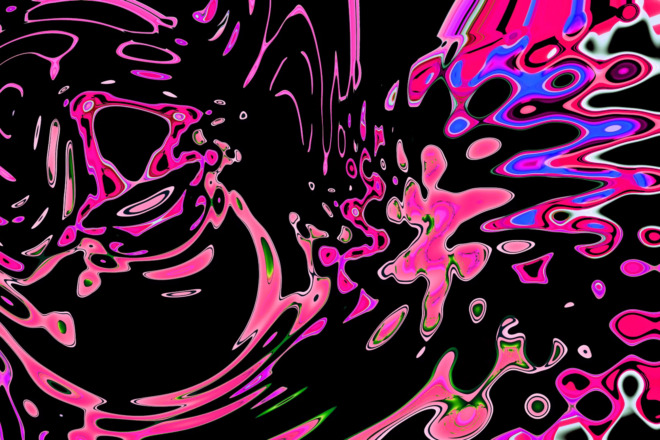What Is the Tahoma Font?
Tahoma is a TrueType font and one that most designers are pretty familiar with. Finding the perfect font for any given project is a challenge for both professional designers with years of experience and newbies. The font that one person loves, another will hate. Still, fonts have a personality all their own. Each one has a tone to it and is known for being used in particular situations.
Tahoma is one of those that works well both in headlines and in smaller sizes within blocks of text because it adapts so easily to different sizes. It also, like many digital fonts today, was created specifically for use with screens. It’s highly adaptive to different screen sizes, looking equally crisp on both a mobile device and a larger personal PC.
Origin
Tahoma was created by Matthew Carter for Microsoft Corporation. Carter’s name is one you might recognize. He is an 85-year-old British type designer known for creating Verdana, Georgia, Bell Centennial, Miller and Galliard fonts. He also co-founded Bitstream, one of the first companies to begin selling fonts online. It is obvious that when it comes to fonts, Carter has been and is a visionary.
Carter began designing fonts in the early 1960s. When he started, he used physical type or photo type-settings. He morphed the font over the years into a digital font design. He is skilled in custom lettering, and these skills all come into play with typefaces such as Tahoma. You can see the influence of physical type in his designs, but he also seems to have an intrinsic understanding of how digital types work.
Tahoma was first released with Windows 95. The font was also included in later Office versions — Office 97, 2000 and XP. This made it pretty common over the years, but it still isn’t one of the most popular typefaces out there.
What Is a TrueType Font?
Almost all fonts that come on an Apple- or Windows-based operating system are TrueType fonts. Examples include Tahoma, Helvetica, Times New Roman and Courier.
Apple developed the TrueType standard in the 1980s, giving developers precise control over how their fonts appeared on a screen — right down to the level of individual pixels. Although designers can no longer always achieve pixel-level control over how text appears, TrueType fonts still reign supreme when it comes to how they look on computer screens and in print.
There are two components of TrueType technology — the font files, which include a description of the fonts, and the TrueType Rasterizer, which reads the font description to generate bitmaps. The rasterizer software is usually included in the operating system or printer control software. Therefore, it’s written to have a clean, modular structure in portable C and a defined client interface for ease of use.
The TrueType Rasterizer reads the outline description of the character from the font file. It scales the outline description to the requested resolution and size, adjusting the outline description to the pixel grid. Then, it fills the adjusted outline with pixels. That’s how TrueType fonts look consistent when they’re bolded, italicized or scaled up or down when users change the font size. There may be some slight differences between different displays, but TrueType fonts remain consistent overall.
The Intricacies of Tahoma
Tahoma font has been compared to Verdana, likely because Carter designed both, and the two are somewhat similar in appearance. However, Tahoma has a thinner body than Verdana does. In addition, the letters are spaced much closer together. This gives Tahoma a more slender overall width than Verdana. Carter has stated that he designed Tahoma to serve as a bitmap font, but then he wrapped TrueType outlines around the bitmaps he’d created.
This is a unique way to create a font and thus makes Tahoma unique among them. Designing in this manner makes Tahoma perfectly suited for screen use.
Tahoma is considered a humanist sans-serif typeface. Humanist means the font was modeled after written Roman lettering and Carolingian calligraphy, having a somewhat organic appearance that mimics the careful strokes of an ink pen. The Italian humanists developed a writing style that let them copy manuscripts quickly, challenging the intricate Blackletter style that was popular in the early fifteenth century. This calligraphy form — known as humanist minuscule — inspired modern humanist typefaces.
Sans-serif means the font doesn’t have serifs, small lines extending from the tips of the letters. Serifs often get lost on computer displays, especially if the text is small, and they can make digital media harder to read. Sans-serif fonts have thus become popular for typing on computers. Typewriters still make use of serif fonts, as do many headers on news sites.
In bold, Tahoma is built on a double pixel width, making it heavy in weight. The uppercase “i” is discernable from the lowercase “L.” This means that the font works particularly well in technical books and journals where letters and abbreviations are often used or where periodic table elements might be listed.
Where Does the Font’s Name Come From?
The name comes from the iconic Washington stratovolcano, Mount Rainier. This prominent feature of the Seattle skyline is also known as Mount Tahoma, Tacoma or Taquoma — depending on the translation and spelling — to the area’s Native American Puyallup Tribe. The word comes from the Twulshootseed language and means “mother of all waters” or “place where water begins.”
Matthew Carter designed Tahoma for Microsoft, whose headquarters is in Redmond, Washington. As part of the Seattle metropolitan area, Redmond gets a great view of Mount Rainier/Tahoma, which probably inspired the name.
What Does the Font Imply?
Tahoma has an almost formal feel to it, which might explain why technical publications love it. Unlike Verdana, where the wider typeface sometimes creates issues, Tahoma is narrower and rarely has these same problems. Similar to Verdana, though, if the person does not have the font installed on their computer, it can look odd on the screen.
However, since Tahoma font was released with various versions of Windows and Microsoft products, most users have this font already installed. The font is very readable on screens of varying sizes — since it was designed for that exact purpose. Because of this, it is a solid choice for any type of online design work from headlines to logos to blocks of text.
The font can also be rotated and sized to scale, so it is very adaptable, too. When it comes to this font, there don’t seem to be any strong emotions one way or the other, either. Tahoma isn’t hated like Comic Sans is.
Where It’s Commonly Found/Used
Tahoma was used in the default screen for several versions of Windows (2000, XP) and has been used for Sega’s Dreamcast. People often use it in place of Arial in design.
In some fonts, the lowercase “L” and the uppercase “I” look exactly the same, so it is hard to tell them apart. With Tahoma, it is easy to spot the difference. If you’re writing technical or scientific publications and need to add abbreviations for the elements or some other formula-type listing, the font works well to allow the reader to decipher the exact letters being shared.
How It Should Be Used
Tahoma font works well for anything that will appear on a screen. It’s ideal for eBook versions of technical and scientific books, magazines and journals. The font works equally well as a headline — where it will appear bolder and a bit wider set — or as a body text font. It adapts well to these different sizes, so the uses are limitless for Tahoma.
Tahoma is also a good choice for printed publications like books and magazines. The text is straightforward rather than highly stylized, lending itself well to the printer and making it easy to read.
Where Not to Use Tahoma
The same no-frills appearance that perfectly suits books, news stories and magazines can also look too impersonal for certain applications. Tahoma would likely be a poor choice of tattoo font — most people want a little more stylization or decoration for that purpose. It would also be inappropriate as a header on a wedding invitation, Christmas card or sympathy card.
In general, any situation that calls for elegance, grace or personal touches might be better served by a cursive or handwritten-style font. But for body text, Tahoma is usually a solid choice.
Almost Last, But Not Least
Tahoma is one of those typefaces that is often overlooked. Imagine you are a designer or even a layperson scrolling through a long list of font options. Tahoma appears pretty far down alphabetically and is under more common fonts, such as Arial and Times New Roman. Because of this, users don’t always make it down the list to try out this versatile font.
If you’ve overlooked Tahoma up ‘til now, it’s time to give it a second look for your design needs. It’s a perfect body font for both casual and formal applications. As a TrueType, sans-serif typeface, it smoothly scales up and down for different display sizes, and the clean lettering makes it easy for anyone to read.
The Font Series Guide: Introduction
Chapter 1: 15 Google Fonts You Should Be Using
Chapter 2: Times New Roman
Chapter 3: Roboto
Chapter 4: Georgia
Chapter 5: Verdana
Chapter 6: Helvetica
Chapter 7: Comic Sans
Chapter 8: Didot
Chapter 9: Arial
Chapter 10: Tahoma
Chapter 11: Garamond
Chapter 12: Century Gothic
Chapter 13: Brody
Chapter 14: Bromello
Chapter 15: Savoy
Chapter 16: Athene
Chapter 17: Calibri
Chapter 18: Proxima Nova
Chapter 19: Anders
Chapter 20: Monthoers
Chapter 21: Gotham
About The Author
Eleanor Hecks is the Editor-in-Chief of Designerly Magazine, an online publication dedicated to providing in-depth content from the design and marketing industries. When she's not designing or writing code, you can find her exploring the outdoors with her husband and dog in their RV, burning calories at a local Zumba class, or curled up with a good book with her cats Gem and Cali.
You can find more of Eleanor's work at www.eleanorhecks.com.


